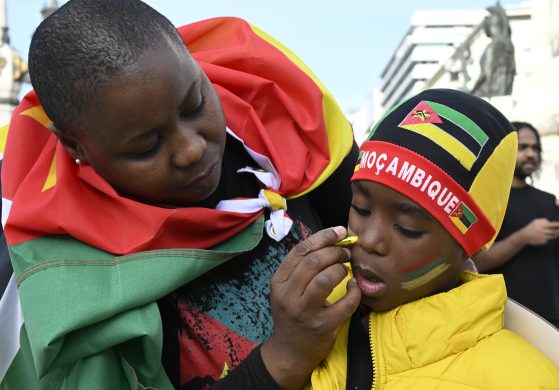The AIDS crisis has cut life expectancy in many African countries to less than 40 years, making it the biggest factor in the dramatic decline of overall human development indicators in the continent, according to this years Human Development Index, released worldwide Thursday.
The grim statistics on declining human development trends in much of sub-Saharan Africa were disclosed at a panel discussion in Bangkok at the XV International Conference on AIDS.
Sub-Saharan Africa is home to just over ten percent of the worlds population – and to almost two-thirds of all people living with HIV. In 2003, an estimated three million people became newly infected, and 2,2 million died.
UNDPs 2004 Human Development Index shows that 13 sub-Saharan Africa countries have suffered dramatic reversals in human development since 1990, a decline largely attributable to the AIDS pandemic. In seven of these countries, the rising prevalence of HIV/AIDS since 1990 has driven life expectancy down below 40 years. In Zambia down to just 32,7 years and in Zimbabwe 33,9 years.
– In all these countries, AIDS is reversing the hard-won development gains of recent decades, said Elizabeth Lwanga, deputy director of the United Nations Development Programmes Regional Bureau for Africa. – We need an unprecedented and holistic response to this crisis, which is taking a devastating toll on our communities, and on the capacity of our public institutions, added she.
In Swaziland and Lesotho, AIDS prevalence rates now exceed 30 percent for the population between 15 and 49 years, the most affected group. In Botswana, infection rates for the same age group have climbed to 37 percent. Zimbabwes prevalence rate in that key population sector is 24,6 percent. In Zambia, the rate is 16,5 percent.
Some countries in the region are also struggling with crisis or post-crisis situations, another debilitating obstacle to development.
The five countries with the lowest levels of human development in this years global rankings are: Guinea-Bissau, Burundi, Mali, Burkina Faso, Niger, and Sierra Leone.
West African Sierra Leone, still recovering from a devastating civil war, has been ranked at the bottom of the global Human Development Index for seven straight years.
The Human Development Index has been an integral part of the annual Human Development Report since the report’s first edition in 1990. The Index covers 175 countries, plus Hong Kong and the Occupied Palestinian Territories.
The Index focuses on several measurable dimensions of human development – including life expectancy, infant mortality, school enrolment, and literacy, as well as income – which together present a fuller view of a countrys development than do purely economic data alone.
The 2004 Human Development Index, along with additional press materials and the complete text of the 2004 Human Development Report, can be accessed at www.hdr.undp.org/presskit/
UNDP is the UNs global development network, advocating for change and connecting countries to knowledge, experience and resources to help people build a better life.
To receive more UNDP news bulletins about development issues and projects around the world, please subscribe to www.undp.org/dpa/journalists/subscribe.html
Kilde: UNDP















